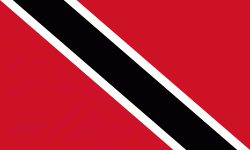Point Fortin (Point Fortin)
At the beginning of the 20th century (before the discovery of oil), Point Fortin was an agricultural community with three distinct and separately owned cocoa and coconut estates.
These estates were sparsely populated. Employment was provided for a small number of workers who depended on the estates for their living accommodation as well as their food and other supplies. Travel in and out of Point Fortin was by coastal steamers as there was no road into or out of the area. The inhabited area was located along the seacoast.
In 1907, the Trinidad Oilfields moved into Point Fortin on an expedition for the exploration of oil and sank its first oil well on the La Fortunee Estates. That company turned out to be the only one that survived successfully, although there had been several similar expeditions by other oil companies.
The company later changed its name to the United British Oilfields of Trinidad then became Shell Trinidad Limited. In 1974 it was acquired by the Government and named TRINTOC or the Trinidad and Tobago Oil Company, today known as Petrotrin.
The change from an agricultural to an oil based economy made a significant impact in Point Fortin. There was rapid development in the construction of dwelling houses, plant, pipelines and oil tanks in the area. Point Fortin was booming and labour, particularly skilled labour for the new technology, was scarce and posed a major problem. Trinidadians did not seem to be attracted to the area.
Although people migrated from all over the country, the population in 1931 was less than 500. There were very few houses, no schools, and recreational and other facilities. As a result, Trinidadians who went to work in Point Fortin never took their families with them.
However, this changed when the company realised that in order to attract and retain workers, they needed to develop the area. This encouraged families to settle in the area, and coupled with a growth in the commercial sector, brought about such facilities as a post office, police station as well as other governmental agencies and banks.
In the 1960s the town began to see a decline due to massive retrenchment. The Government tried to revive the economic activity and eventually succeeded in establishing the Dunlop Tyre Factory. However the economic revival was only achieved in the early 1970s as a result of the Oil boom and the acquisition of Shell Trinidad Limited by the government. Point Fortin's Mayor is Saleema McCree Thomas (PNM). The MP for Point Fortin is Kennedy Richards Jr. (PNM).
Map - Point Fortin (Point Fortin)
Map
Country - Trinidad_and_Tobago
 |
 |
| Flag of Trinidad and Tobago | |
The island of Trinidad was inhabited for centuries by Indigenous peoples before becoming a colony in the Spanish Empire, following the arrival of Christopher Columbus, in 1498. Spanish governor José María Chacón surrendered the island to a British fleet under the command of Sir Ralph Abercromby in 1797. Trinidad and Tobago were ceded to Britain in 1802 under the Treaty of Amiens as separate states and unified in 1889. Trinidad and Tobago obtained independence in 1962, becoming a republic in 1976.
Currency / Language
| ISO | Currency | Symbol | Significant figures |
|---|---|---|---|
| TTD | Trinidad and Tobago dollar | $ | 2 |
| ISO | Language |
|---|---|
| ZH | Chinese language |
| EN | English language |
| FR | French language |
| ES | Spanish language |















